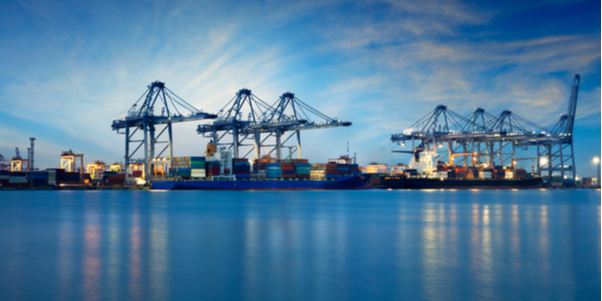Customs Declaration Service
Q1: I have received an alert from HMRC advising me to prepare for the new Customs Declaration Service (CDS). I currently export to countries outside the EU, can you tell me more about CDS and tell me when this new service will affect my exports?A1: For over 20 years import and export declarations have been submitted to HMRC via the customs computer system “Customs Handling of Import Export Freight” (CHIEF). This is being replaced by the Customs Declaration Service (CDS) system which is a modern, flexible system that can handle anticipated future import and export growth. The decision to replace CHIEF with CDS was made before the EU referendum, however CDS will be scaled to handle any potential increases in the volume of declarations that may result from the UK’s exit from the EU.
HMRC began phasing in CDS from August 2018, starting with select importers who submit Supplementary Declarations (SDIs) for their imports under their Customs Freight Simplified Procedure (CFSP) authorisation. Importers, exporters or their agents will be informed by their software provider when they need to provide the additional information in order to start making declarations on CDS. CHIEF will continue to run during this time to aid the transition. CDS will be accessed on GOV.UK using a Government Gateway account – if traders use a customs declaration software package, they will need to follow the instructions and documentation from their supplier.
CDS will offer several new and existing services in one place - for example, traders will be able to view previous import and export data on pre-defined reports, check the tariff, apply for new authorisations and simplifications, and check their duty deferment statement online help will include self-service tools, guides and checklists.
If a trader imports or exports goods outside the EU, they or their agent will be currently using CHIEF to:
-
process declarations for goods entering and leaving the UK or EU through ports and airports
-
calculate and pay the correct duty and taxes
-
complete customs information electronically
They will still be able to do these things on CDS, but there will be differences:
Some additional information will be required for declarations in order to align with the World Customs Organisation Kyoto Convention, currently being implemented in the UK through the Union Customs Code (UCC). This additional information includes:
-
an audit trail of previous document IDs
-
additional party types, such as the buyer and seller
-
possible additional commercial references or tracking numbers
-
levelling – change between ‘Header’ and ‘Item’ for some data items
To align UK customs data with international standards, there will also be changes to:
-
location of goods identification (based on UNLOCODE)
-
the warehouse type code list
-
item tax lines, including method of payment codes
-
unit of quantity codes (ISO)
-
the way customs procedures are quoted
-
the number of items on a declaration – CDS will allow a maximum of 999 items on a customs declaration instead of the current 99 items on CHIEF
Currently data is submitted by completion of the 68 boxes on SADc88 declaration. Under CDS there will not be any boxes, but instead data elements. These data elements are split into 8 data groups:
1. Message Information (Including Procedure Codes)
2. References of Messages, Documents, Certificates and Authorisations
3. Parties
4. Valuation information and taxes
5. Dates, Times, Periods, Places, Countries and Regions
6. Goods Identification
7. Transport Information (Modes, Means and Equipment)
8. Other Data Elements (Statistical Data, Guarantees and Tariff Related Data)
It is worth spending time familiarising yourself with these data sets, to ensure your procedures are adjusted to facilitate clear written instructions to your Clearance Agent/Freight Forwarder/Customs Broker, containing the information to be declared within the 8 data groups. It is worth remembering it is the legal responsibility of the UK importer or UK exporter to ensure that the details submitted to HMRC are correct, irrespective of whether they have used a Clearance Agent/Freight Forwarder/Customs Broker to submit the declaration on their behalf.
You may register for free of charge alerts by visiting “Getting ready for the Customs Declaration Service” page on gov.uk
Preparing for Brexit
Q2: In these uncertain times, what can I be doing now to prepare for Brexit?
A2: It is vitally important businesses understand their supply chain TODAY, in order to be able to understand and cope with the changes Brexit will bring to those supply chains. Brexit is likely to slow the movement of goods through the supply chain—through customs, ports, logistics, therefore it would change how stock is distributed, including the network design needed to cope, and the facilities needed to hold stock. In preparation you can be considering the following:
-
You can look to your current practices and records to establish what goods and/or services you ship from UK to EU27 (include temporary goods, goods returned, shipments for and after repair, samples, exhibitions) and what goods and/or services receive from EU27 into UK (include temporary goods, goods returned, shipments for and after repair, samples, exhibitions).
-
Consider the delivery terms (Incoterms) you use for your EU trade and what impact will a customs border have on your delivery terms?
-
Consider your distribution set-up—do you move goods out of a warehouse based in an EU27 country?
-
Do you import from outside the EU and supply under free circulation rules into the EU27?
-
Do any of your UK based suppliers bring goods in from the EU27?
-
What modes of transport do you use when trading with EU27, will the costs change?
-
For exports to non-EU countries does your buyer rely upon your goods qualifying for an EU preferential trade agreement? What would be the duty impact if goods no longer qualified?
-
For imports from non-EU countries ,do you currently pay a low or zero rate of customs duty because of an EU preferential trade agreement? What would be the impact if goods no longer qualified?
-
Would you need to rescind any Long Term Supplier Declarations (for preferential origin) you previously issued to EU27?
-
Would your EU27 suppliers rescind any Long Term Supplier Declarations (for preferential origin) they previously issued, having to recalculate their justification for qualifying for preference.
-
How will you manage stock, potentially same part number but of differing origin?
-
Would you consider stock-piling, either here in UK or an EU Member State?
-
For imports from non-EU countries, what existing trade tariff import duty rate do you pay?
-
For imports from non-EU countries, are there any special customs measures or licensing/registrations applicable?
-
For imports from non-EU countries into UK, how do you currently manage import entry declarations (instructions to freight forwarders, tariff classification, origin, customs valuation, import licences, record-keeping, management checks etc.)?
-
If necessary, how easily could these be ramped up to cope with declarations to EU27 (previously treated as Arrivals—for which you may currently submit Intrastat Reports)?
-
For exports to non-EU countries from UK, how do you currently manage export entry declarations (instructions to freight forwarders, tariff classification, origin, customs valuation, export licences, record-keeping, management checks etc.)?
-
If necessary, how easily could these be ramped up to cope with declarations to EU27 (previously treated as Despatches—for which you may currently submit Intrastat Reports)?
-
Are you currently required to obtain Licences/Permits/Certificates/Authorisations—consider how these may be affected—both for goods and for services
-
Import VAT—consider current import VAT arrangements and how these may change
-
Import VAT—do you work with suppliers sending parcels up to and including £135? (Post-Brexit these suppliers may need to charge VAT at point of purchase and register with an HMRC digital service)
-
EU VAT—do you know which country would be best suited to support your EU supply chain?
-
Have you considered a presence in an EU Member State?
-
Have you considered customs authorisations both here and perhaps also in an EU Member State e.g. Customs Warehouse Authorisation in UK and Customs Warehouse Authorisation in an EU Member State
-
Are you already VAT registered in another EU Member State—would this be affected?
-
Currency risk—have you considered how this may affect existing and future contracts?
-
Workforce and future skills– how are you affected with existing workforce—and in the future?
-
Training—consider up skilling existing staff—and implementing a training programme
-
Contracts—do you need to review existing contracts, and/or those still in negotiation stage
Know your supply chain – and be prepared for all possible outcomes.
Gov.uk have published much guidance on preparing your business for the UK leaving the EU, including over a hundred technical papers focusing on what to do in case of a No Deal Brexit. The most recent addition being a series of 7 questions, which will lead you to guidance relevant to your business. The link is as follows:
Export Licence Control under a No-Deal Brexit
Q3: I currently move Annex I Dual Use goods to EU Member States. These are not goods specified by Annex IV (Annexes to EC Reg 428/2009), therefore I do not require an export licence. For these exports I currently need to annotate my commercial documentation as per Article 22(10) of Council Regulation (EC) No. 428/2009, to indicate clearly those items are subject to controls if exported from the community. Shall this continue in the same way if we Brexit with No Deal?
A3: A new Open General Export Licence (OGEL) has been published by The Department for International Trade (DiT), issued in exercise of powers conferred by Articles 9(2) and (4) of Council Regulation (EC) No. 428/2009 (“EU Dual Use List”), as retained by the EU (Withdrawal) Act 2018 (“the Retained Regulation”) and Article 26 of the Export Control Order 2008 “The Order”).
The purpose of this new General Licence is to allow, subject to certain conditions, the export of dual-use goods (meaning goods/materials/software/technology with both a civilian and military application) from the UK to EU member states and the Channel Islands after the UK leaves the European Union. This new General Licence will come into force at 11pm on 29 March 2019 if the UK leaves the EU without a deal.
This General Licence covers all entries specified by Annex I of the Retained Regulation, other than those specified by Annex IV.
Before using this new General Licence, you must register through SPIRE (the export control joint unit’s (ECJU’s) electronic licensing system), stating where you will keep records of exports or transfers and where the ECJU may inspect them. By response you will receive your own unique Licence Number, which must be quoted on both your official and commercial export documentation for tangible goods moving under this new General Licence.
As with all General Licences, you need to be aware the licence may have been amended since registration. Before you export using a General Licence that you are registered for, you must ensure you can meet the conditions of that General Licence as in force at that time. Always READ the General Licence, as it may contain conditions you do not expect (e.g. there is specific condition 4 (7) for Category 0 goods)
Here is the link to sign up to receive Notice to Exporters (this new General Licence was notified by Notice to Exporters 2019/03).






![The Bedford College Group logo [WHITE]](https://www.chamber-business.com/hs-fs/hubfs/The%20Bedford%20College%20Group%20logo%20%5BWHITE%5D.png?width=139&height=81&name=The%20Bedford%20College%20Group%20logo%20%5BWHITE%5D.png)
